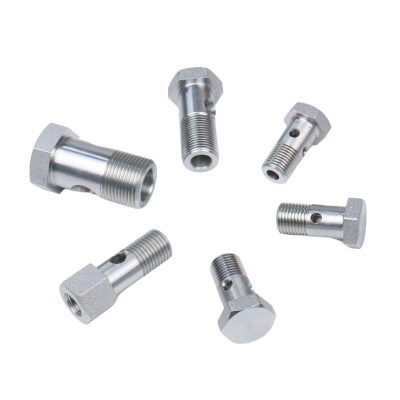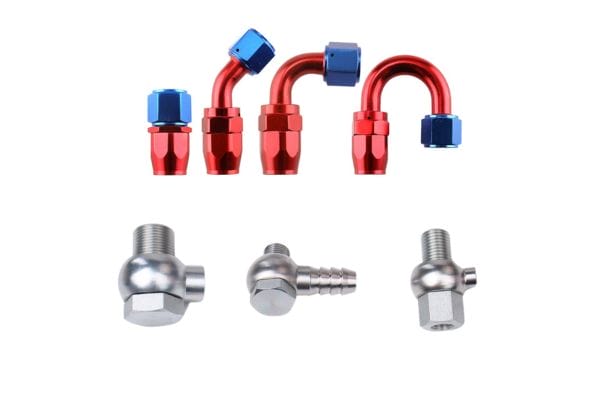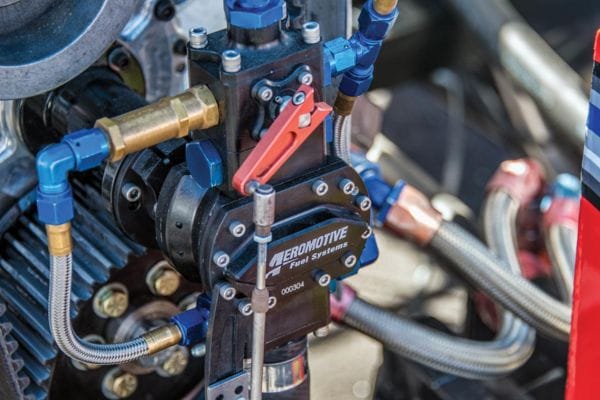Banjo Bolts and AN Fittings are two popular types of connectors used in hydraulic and automotive applications. Each type of fitting has distinct characteristics and applications, making it vital to comprehend their differences to select the most suitable one for your specific needs. The purpose of this article is to elucidate the key differences between Banjo Bolts and AN Fittings. By providing a comprehensive comparison, we aim to help readers make informed decisions about which fitting best meets their requirements, whether for hydraulic systems, automotive projects, or other applications.

Banjo Bolts are specialized fasteners used in various hydraulic and automotive systems to connect fluid lines. They consist of a hollow bolt that allows fluid to pass through its body, making them an efficient solution for directing fluid in tight or confined spaces. These bolts are typically employed in applications where a compact and efficient connection is essential. Visually, Banjo Bolts feature a bolt with a hollow shaft and a perforated circular section (the “banjo”) through which the fluid flows. This design facilitates a 360-degree rotation, allowing for versatile positioning and alignment of fluid lines.
The structure of a Banjo Bolt includes three main components:
The design ensures a secure connection while allowing fluid to flow efficiently through the system.
Banjo Bolts are commonly used in various applications, including:
Their ability to provide a compact and reliable connection makes them ideal for these uses.
The benefits of using Banjo Bolts include:
Efficient Fluid Flow: The hollow bolt design facilitates uninterrupted fluid flow, enhancing system efficiency.
These advantages make Banjo Bolts a popular choice for many hydraulic and automotive applications.
Despite their benefits, Banjo Bolts have some limitations and potential issues:
Understanding these disadvantages is important for proper installation and maintenance to ensure optimal performance and reliability.

AN Fittings, short for Army-Navy fittings, are standardized connectors used extensively in hydraulic, automotive, and aerospace applications. They are known for their durability, precision, and reliability in high-pressure environments. AN Fittings are designed to create secure, leak-proof connections in fluid systems. Visually, AN Fittings have a distinctive threaded design with a 37-degree flare that ensures a tight seal. These fittings are typically made from high-quality materials like aluminum, stainless steel, or brass, which contribute to their robustness and long-lasting performance.
The structure of AN Fittings includes several key components:
This design ensures a reliable and strong connection that can withstand high pressures and extreme conditions.
AN Fittings are commonly used in various applications, including:
Their versatility and reliability make AN Fittings a preferred choice in these critical applications.
The benefits of using AN Fittings include:
These advantages make AN Fittings ideal for demanding applications where reliability and performance are paramount.
Despite their benefits, AN Fittings have some limitations and potential issues:
Understanding these disadvantages is important for making informed decisions about when and where to use AN Fittings to achieve the best results for your specific application.

Banjo Bolts:
AN Fittings:
Banjo Bolts:
AN Fittings:
Banjo Bolts:
AN Fittings:
Banjo Bolts:
AN Fittings:
Banjo Bolts:
AN Fittings:
Understanding these key differences helps in selecting the appropriate fitting based on specific needs and application requirements, ensuring optimal performance and reliability of the fluid system.

Category | Banjo Bolts | AN Fittings |
A. Application Suitability | – Ideal for tight spaces like brake lines, fuel lines, and some hydraulic systems – Allows 360° rotation for flexible routing | – Designed for high-pressure, high-reliability systems such as performance vehicles, aircraft, and industrial use |
B. Material Selection | – Stainless Steel: Excellent corrosion resistance, suitable for harsh environments – Brass: Suitable for low-pressure corrosion-resistant needs | – Aluminum: Lightweight, great for racing or weight-sensitive applications – Stainless Steel: Strong and corrosion-resistant, for high-stress uses |
C. Size and Thread Specs | – Bolt size must match the receiving port – Thread type must be compatible with system requirements | – Match fitting size (e.g., AN-6, AN-8) and thread type to system requirements for proper performance |
D. Washer Type and Quality | – High-quality copper or aluminum washers required for proper sealing – Critical to prevent fluid leaks | – Sealing depends on the 37° flare angle – All connections must match the flare angle to prevent leaks |
E. Installation Considerations | – Use a torque wrench to achieve manufacturer-specified torque – Ensures leak-proof seal | – Use flare wrenches to avoid damaging fittings – Proper flaring and threading techniques are necessary for reliable sealing |
Initial Cost vs. Long-term Benefits
Maintenance and Replacement Costs
Evaluate the ease of maintenance. High-quality fittings may require less frequent replacement and offer better performance, reducing long-term costs.
By considering these factors, you can make a well-informed decision when choosing between Banjo Bolts and AN Fittings, ensuring the optimal performance, reliability, and longevity of your system.
Banjo Bolts and AN Fittings, consider the specific requirements of your application, including pressure, space constraints, material compatibility, and environmental conditions. Making an informed decision is crucial for the optimal performance and safety of your system. By understanding the differences and carefully evaluating your needs, you can select the most suitable fitting to ensure durability, efficiency, and reliability.
A Banjo Bolt is a hollow bolt that allows fluid to pass through its body, commonly used in hydraulic and brake systems for compact and flexible fluid routing.
AN Fittings are standardized connectors with a 37-degree flared end, designed for high-pressure and high-reliability applications in fuel, oil, and cooling systems.
Use Banjo Bolts in systems with space constraints, such as brake lines and fuel systems, where flexible routing and a compact design are needed.
AN Fittings are recommended for high-pressure and high-reliability applications, such as in performance vehicles and industrial systems, where robust and precise connections are essential.
Banjo Bolts are typically made from stainless steel or brass for corrosion resistance, while AN Fittings are often made from aluminum or stainless steel for lightweight and high-strength applications.
For Banjo Bolts, use high-quality washers and proper torque. For AN Fittings, ensure correct flaring and use appropriate wrenches to avoid damaging the threads. Always follow manufacturer guidelines for installation.